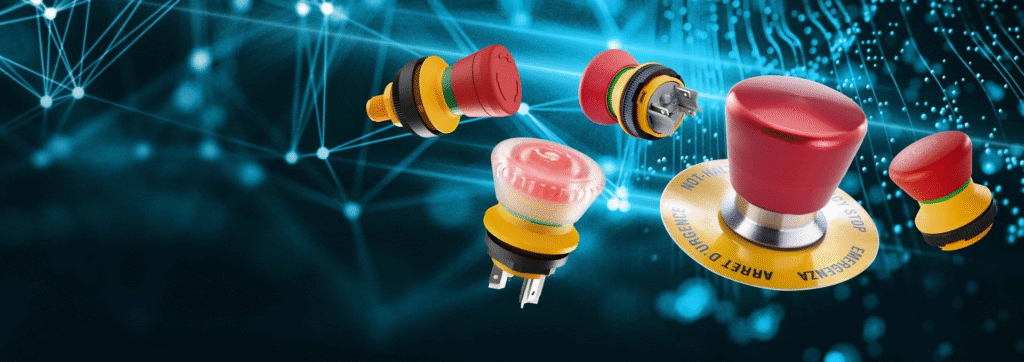A groundbreaking legislative move marks a turning point in AI safety governance
In a landmark move that is resonating across the nation and the globe, the state of New York has passed the first comprehensive U.S. law aimed at preventing AI-fueled disasters. Touted as a pioneering moment in tech regulation, the legislation is designed to ensure that artificial intelligence systems—particularly those deployed in critical infrastructure, public safety, and high-risk sectors—operate within strict boundaries that prioritize human oversight, transparency, and security.
The law, officially known as the AI Risk Mitigation and Accountability Act (AIRMA), was passed by the New York State Legislature and signed into law by Governor Kathy Hochul. This makes New York the first U.S. state to codify AI-specific safety standards into a comprehensive legal framework—one that addresses both present concerns and the emerging capabilities of advanced AI systems.
This press release offers a full breakdown of the law’s contents, motivations, implications, and broader significance in the global conversation on responsible AI governance.
What the New Law Covers
The AI Risk Mitigation and Accountability Act spans a wide range of AI-related safety concerns, and its core objective is clear: to prevent AI from causing large-scale harm to society—whether by accident, misalignment, or malicious misuse.
Here are the primary components of the new law:
1. Mandatory Risk Assessments
Any company or organization deploying AI systems in New York, especially in sectors like healthcare, transportation, finance, public utilities, or law enforcement, must conduct pre-deployment risk assessments. These assessments must evaluate the AI’s potential for misuse, failure, discrimination, or security breaches.
2. AI Disaster Prevention Registry
The state will maintain a central registry of high-risk AI deployments, including systems used in autonomous vehicles, energy grid control, emergency communications, and algorithmic trading. This registry will allow for real-time monitoring and public accountability.
3. Human-in-the-Loop Oversight
The law mandates that all AI systems performing critical decision-making roles—such as triage in hospitals or predictive policing—must include a human-in-the-loop mechanism, meaning a human must review or have veto power over high-stakes decisions.
4. Explainability and Transparency Requirements
Developers and vendors of AI systems must ensure their models are explainable, meaning their logic and outcomes can be understood by regulators and, when applicable, by users. Black-box AI systems without proper transparency will be restricted or banned in high-risk environments.
5. Third-Party Auditing
Organizations will be required to submit their AI systems for independent third-party audits to verify alignment with state safety guidelines and ethical standards. These audits will include both algorithmic fairness checks and cybersecurity evaluations.
6. Emergency Shutdown Protocols

Any high-risk AI deployment must include a kill switch or emergency shutdown protocol that can be triggered by humans if the system begins to behave erratically or dangerously.
7. Severe Penalties for Non-Compliance
Companies that fail to comply with these standards face substantial fines, potential shutdown of AI operations, and public disclosure of violations. Repeat offenders may be barred from deploying AI systems in New York entirely.
Why This Law Was Passed Now
The urgency of the AI Risk Mitigation and Accountability Act comes amid growing concerns about the unpredictability of advanced AI systems, particularly large language models, autonomous agents, and generative AI tools.
Recent headlines about AI models generating false medical diagnoses, deepfakes interfering in elections, or chatbots manipulating users have galvanized public concern and political momentum. Additionally, high-profile warnings from AI researchers and executives—including those at OpenAI, Google DeepMind, and Anthropic—about the existential risks of artificial general intelligence (AGI) have accelerated calls for regulation.
In announcing the law, Governor Kathy Hochul stated:
“We are entering an era where artificial intelligence has the potential to impact every part of our lives—for better or worse. New York is not waiting for a disaster to strike. We are acting now to ensure AI is a tool of empowerment, not destruction.”
Lawmakers behind the bill cited several case studies where insufficient oversight led to unintended consequences—such as biased facial recognition arrests or self-driving car crashes—as clear warnings that proactive legislation is essential.
National and Global Implications
New York’s AI law is already being seen as a model for other states and countries, especially as the federal government in the U.S. has yet to pass comprehensive AI legislation.
Here’s how this could influence broader AI policy:
1. A Template for Federal Action
With Congress divided on AI regulation, New York’s law could serve as a blueprint for national policy. Its blend of safety, transparency, and innovation incentives may appeal to both sides of the political aisle.
2. International Ripple Effects
Governments in the EU, Canada, and Asia have been watching U.S. states closely for AI governance cues. The EU has already passed the AI Act, which classifies AI systems by risk level. New York’s law may help align U.S. standards with global norms.
3. Industry Self-Regulation May No Longer Be Enough
Companies that previously operated under voluntary frameworks or internal ethics boards may now face external accountability. This shift from soft governance to hard law will likely impact business models, development cycles, and deployment strategies.
How Tech Companies Are Respondin
The response from the tech industry has been mixed—but largely constructive.
Supportive Voices:
Some AI companies and thought leaders praised the law for providing regulatory clarity and public trust. Executives from OpenAI, IBM, and Microsoft have expressed that responsible regulation is necessary to ensure long-term innovation.
Cautious Optimism:
Startups and smaller AI developers voiced concerns about the cost of compliance and audit processes but acknowledged that clear rules can create a level playing field and reduce reputational risks.
Opposition:
Certain lobbying groups, including those representing autonomous vehicle manufacturers and high-frequency trading firms, have pushed back on the law’s reach and pace of implementation. They argue it could slow innovation or drive talent and capital to less regulated jurisdictions.
In response, New York has committed to offering technical assistance and a grace period for smaller firms to meet compliance standards. The state also launched a new Office of AI Safety and Governance to guide implementation and industry collaboration.
Civil Society and Academic Reactions
Public interest groups, AI ethicists, and academic researchers have widely applauded the law as a turning point in digital rights and technological responsibility.
Civil liberties organizations, such as the ACLU of New York, praised the requirement for human oversight and transparency in AI policing tools. University researchers hailed the law as a necessary check on powerful systems that are often released with limited testing or red-teaming.
Several universities—including Columbia, NYU, and Cornell Tech—are now working with state agencies to create AI safety curricula, train auditors, and develop testing benchmarks for future use under the law.
What Happens Next
The law will be rolled out in phases over the next 12 to 24 months, giving organizations time to adjust their AI development and deployment practices.
Key next steps include:
- Establishing Technical Standards: A multi-disciplinary committee of engineers, ethicists, and legal experts will draft the exact criteria for explainability, auditability, and shutdown protocols.
- Launching the AI Registry: The state will soon release a public portal where residents can view high-risk AI deployments in their communities.
- Training and Certification Programs: AI developers and third-party auditors will need to obtain new credentials to work with regulated systems under the law.
Conclusion: A New Era of AI Safety Policy Begins
New York’s decision to enact the first AI disaster prevention law in the United States is a historic milestone in the governance of artificial intelligence. It represents a clear shift from passive observation to proactive regulation—a necessary evolution as AI becomes embedded in everyday life.
This law may mark the beginning of a nationwide regulatory wave as other states observe how the policy performs. At its core, the legislation is not about stifling innovation—it’s about building guardrails that ensure that the most powerful technology of our time remains safe, ethical, and aligned with human values.New York’s leadership in this space may inspire other governments to follow suit—and in doing so, help the world navigate the complex but critical path toward trustworthy artificial intelligence.
